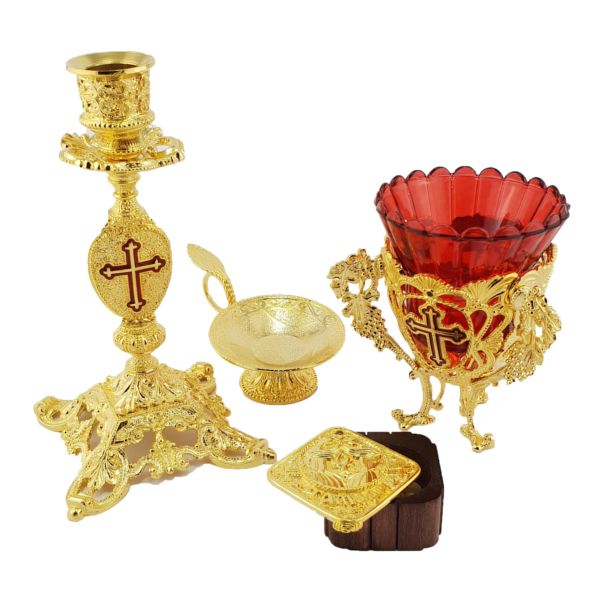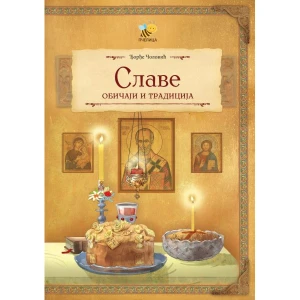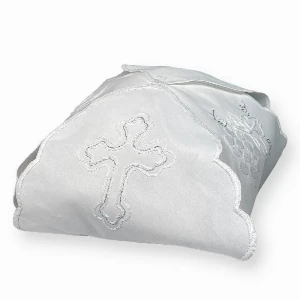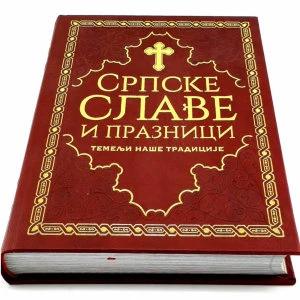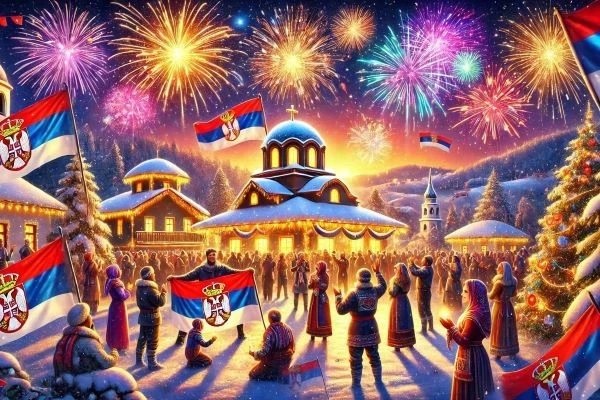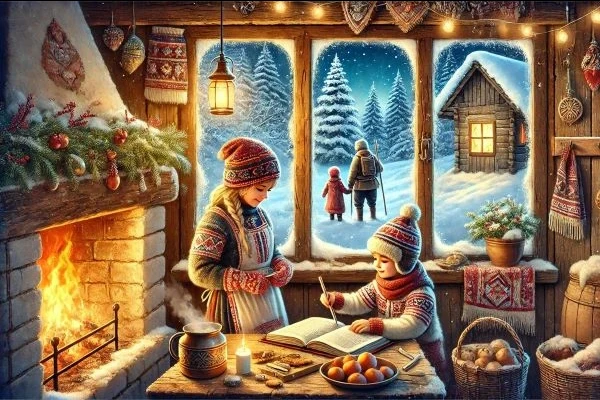HOW IS SLAVA CELEBRATED AMONG SERBS?
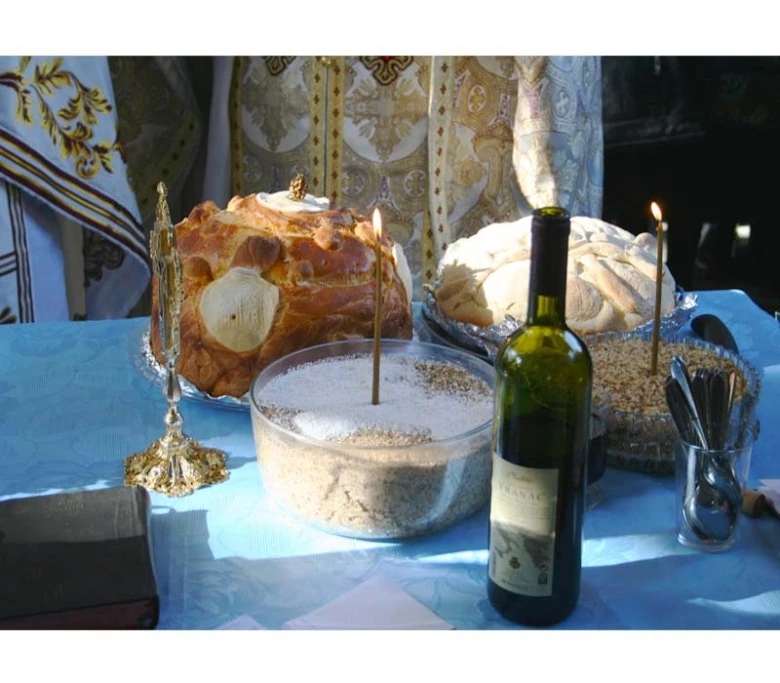
Everything can be taken from a person, but the consciousness of origin and belonging always remains in him. And for Serbs, the custom of slava is an expression of that very consciousness.
Where there is a Serb, there is slava, because, as Vuk Karadzic wrote, "Every Serb has one day a year when he celebrates, and that is called his first name, holy, and mild day." The host is getting older and preparing for the whole year how and with what he will celebrate his first name. "
The season of slavas begins in Serbia at the end of October and lasts until the beginning of May. This custom of celebrating the slava feast, unique in the whole world, has been nurtured by our people for more than seven centuries. It is a rite that connects religiously and socially, one day a year when almost every family of the Orthodox faith celebrates a saint whom it believes will protect it and will ensure its well-being. Then, all the family members gathered to pay their respects to their patron saint, along with dear people, relatives, friends and neighbors.
This holiday, characteristic for Serbs, is one of the few that have been held since pagan times. Once gods were worshiped, today saints. Customs are forgotten, some are added "on the go, some are forgotten, but Christian principles are the foundation of this sanctuary."
It was best held in Serbia, although historical circumstances and the modern age have influenced the way in which slava is celebrated and experienced. The Slava of Christ underwent various transformations according to the time in which one lived. Both theologians and ethnologists call for the return of modesty in the celebration of glory, respect for the most important, with more devotion to the faith and the saint, while preserving the unity with those closest to him.
And how should slava be celebrated?
The answer to this question comes from knowing the meaning, essence of slava and its origin. It is a family rite in honor of the saint, a family prayer of gratitude for everything that the saint does for you and a family prayer that the patron saint blesses you on his day, that you do well in everything in your home and family. That is why slava must be celebrated in that sense, with that lofty goal, and not for the sake of feasting, eating and drinking!
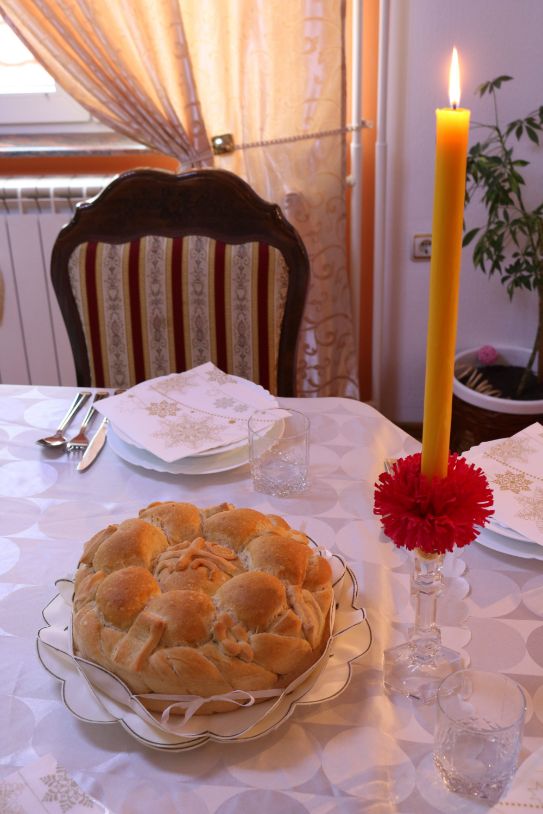
The rite of celebration was introduced into practice by the founder of the Serbian Orthodox Church, Saint Sava, from whose time that rite and the customs that accompany it gradually spread and formed, with numerous local variations. Even today, baptism is the backbone of the family tradition.
So, for slava it is necessary:
- to sanctify the water in your home
- to prepare a celebratory cake from wheat flour,
- slava candle,
- grain,
-
red wine, incense and oil.
Festive candle
For the slava, you need to buy a bigger wax candle, which is placed in the candlestick and specially decorated. It is lit on the day of celebration, before cutting the cake (if it is done at home). The host crossed himself, said a prayer and lit a candle with a match. The candle and its flame symbolize the light of Christ's teaching.
The candle should burn all day, and it is extinguished in the following way: The host crosses himself, takes a glass of wine, takes one teaspoon from it and pours the wine on the wick. The candle will slowly go out, and then it should be taken in front of the icon or some other solemn place in the house, where it should stand until the celebration next year. It can be lit during common prayers in the house.
Slavic grain
On the eve of the feast, the housewife prepares koljivo or panaija, that is, the feast grain. The grain is prepared from pure and shredded wheat grain in clean water. For a better taste, ground walnuts and ground sugar are added. The slav wheat is then transferred to a beautiful, low bowl, shaped nicely and decorated with walnuts and sugar. During the consecration of the cake, grain is carried in the middle of which a candle is placed. The grain is also poured with wine in the shape of a cross,
Just like the slav cake, the slav wheat is also served first by the family, and then by the guests. According to tradition, the grain is served by the housewife or daughter, and she carries it on a tray together with a glass of wine and clean spoons.
The slava's wheat is cooked and offered to the glory of God and the part of the saint that is being celebrated, for the health and progress of the household, as well as for the peace of the souls of the deceased in that home. In Christianity, wheat is a symbol of eternal life - death or resurrection, because when it is sown, the grain of wheat dies and germinates, but a new life is born from it, which brings a hundredfold fruit.
Slava's cake
The day before the slava, the housewife kneads a cake made of pure wheat flour, to which a little Epiphany and consecrated water is added before the celebration. The cake is decorated with various ornaments from a simple dough. The glorious cake represents a sacrifice - but such a sacrifice of gratitude to God, that through Jesus Christ and His suffering we are saved from ruin, which would reach us because of our sins.
The cruciform cutting of the glorious cake represents the suffering of Christ for us, and the pouring of the cut cake with wine (which symbolically represents blood) - means that we are cleansed of our sins with the blood of Christ. Immediately after the consecration, the family takes a piece of cake, and then cuts it and serves other guests with lunch.
Oil, which is served in a lamp, is also a sacrifice to God.
Incense signifies our prayer, which should originate from a pure heart, in order to be pleasant and dear to the Lord, just as the gentle and pleasant smell of incense, which are incense, is to us.
Thus, it should be reminded once again that on the solemnly set table facing the icon, before the arrival of the priest, one should find: a candle on an apprentice, a feast cake, koljivo (grain), a glass of red wine, an incense burner with incense.
And the feast?
In addition to the essential features of the celebration, according to our customs, the host prepares a festive lunch that is performed on the day of the celebration. In some areas, dinner is prepared on the eve of the celebration, which guests come to, and it is called the evening of the holiday. Somewhere, others are celebrated, and even the third day of celebration.
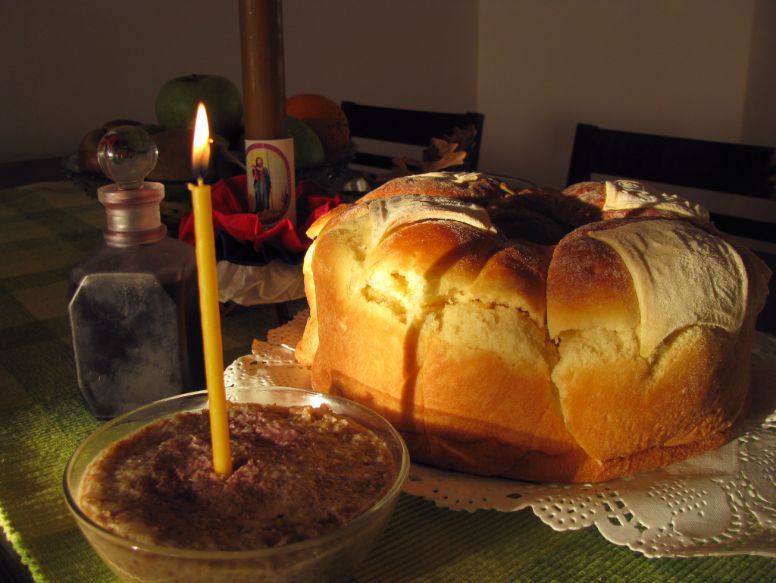
The host decides on the content of the table with his family, in accordance with the possibilities and wishes, but following the Christian principles and the spirit of Orthodoxy, in the solemn tone that this family holiday deserves.
Slava on the UNESCO list
Passed down from generation to generation, from father to son or to an unmarried daughter if there are no sons in the house, slava has remained the only unbroken tradition of Serbs to this day.
In 2014, the glory was inscribed on the UNESCO representative list of the intangible cultural heritage of mankind, along with more than 350 folk customs and games from around the world.
The proposal for enrollment was submitted by the Ethnographic Museum in Belgrade so that the fame would be recognized at the international level. The basic condition was that the proposed element lives in the community, and we are lucky that fame is very present in practice. It was the first entry of Serbia on the UNESCO list of intangible cultural heritage of mankind
And Serbianshop, with its offer, also wants to give its contribution to the preservation of this Serbian shrine, religion, tradition and identity. There are authentic products, such as candlesticks, incense burners, tablecloths and others that will be a necessary addition to the celebration of slava.
So, take a look at the online offer of Serbianshop - to make the slava just the way it should be!
Related products
Read also
Who was Saint Sava and what was his contribution?
"Saint Sava: A Beloved Serbian Saint with a Rich Legacy and Cultural Significance"
…Serbian New Year: Tradition, Customs and How to Celebrate it
The Serbian New Year, also known as the Orthodox New Year, is celebrated on…
Gifts Inspired by Serbian Culture: Authentic Ideas for the Holidays
The holidays are a time of giving, and finding the perfect gift is often a challenge.…
Traditional Serbian Christmas Customs: How to Cultivate Them in Modern Times?
Christmas is the most joyous holiday in Orthodox Christianity, a time when families…
How to Bring the Spirit of Orthodox Tradition into Your Home This Winter?
Winter is the perfect time to bring warmth, togetherness and the spirit of Orthodox…
Serbian Souvenirs: Perfect New Year's Gifts for All Tastes
New Year is the time of giving, and what is more beautiful than a gift that…
How to stay productive and not waste an entire day on Black Friday shopping
Black Friday is a day full of amazing discounts, but it can easily become exhausting…
Folk Beliefs and Customs for Saint Aranđel - Assembly of Holy Angels
Saint Michael the Archangel, who is celebrated…
Folk Beliefs and Customs for Đurđić - Glory of St. George
Đurđić, the feast of St. George, celebrated on November 16, is one of the most…
Smart shopper's guide: How to make the most of Black Friday
Black Friday is the most famous shopping event of the year that offers huge…
The history of Black Friday: How it all began and why it continues
Black Friday, known as the biggest discount day of the year, today attracts…
Gifts for Children in the Diaspora: How to Nurture the Connection with the Language, Culture and Tradition of Serbia
Children who grow up in the diaspora face specific challenges - they lose contact…

Apply for newsletter
Sign up for the Serbianshop newsletter and get a 10% discount.


